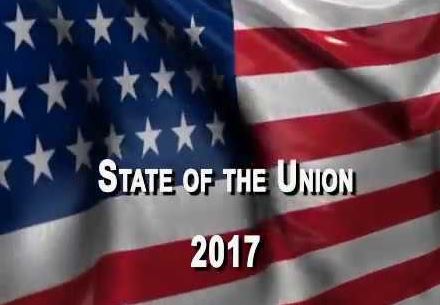What you need to know: Trump’s address to Joint Session of Congress #SOTU
February 27, 2022
President
Brooke Singman,
President Trump will make his first address to a Joint Session of Congress on Tuesday. The speech will be like a State of the Union address, though it technically is not called that until the president’s second year in office.
Here’s what you need to know:

History
- Article II, Section 3 of the United States Constitution states, “[The president] shall from time to time give to the Congress information of the state of the union, and recommend to their consideration such measures as he shall judge necessary and expedient.” President George Washington clarified “from time to time,” and since 1790, State of the Union messages and first-year addresses to Congress have been delivered annually.
- President Thomas Jefferson was concerned that appearing before Congress was too similar to the British monarch tradition of speaking before each new Parliament, so he chose to deliver his State of the Union in writing.
- President Woodrow Wilson, in 1913, decided to begin delivering oral addresses to Congress.
Topics
- Presidents tend to dedicate their first congressional address to establishing the tone of the new administration, with optimistic language to look ahead, and to set their legislative agenda.
- In their first addresses, presidents take positions on a range of policy issues; since 1965, the average number of policy requests in a first-year address is 42.
- The last five presidents delivered their addresses around the same time as Trump — coming just weeks after the inauguration.
- Some modern presidents have chosen a specific theme. President Ronald Reagan’s 1981 address was called the “Address Before a Joint Session of Congress on the Program for Economic Recovery.” President George W. Bush’s 2001 speech was his “Budget Message”
- On average, addresses to Congress have 5,760 words and last just under an hour. President Bill Clinton set the record for the longest – taking nearly one hour, 15 minutes.
Seating
- The speech is delivered in the House chamber of the U.S. Capitol. There is no assigned seating for members, with the exception of the speaker of the House and the vice president, who presides as president of the Senate — they sit directly behind the president on the dais.
- In order to ensure the continuance of government, tradition requires one member of the Cabinet not attend the speech. That secretary is considered the “designated survivor.” After 9/11, congressional leadership also began asking two members from each house of Congress, representing both parties, not to attend the president’s speech.
- During President Barack Obama’s first address to Congress, his Attorney General Eric Holder was named the designated survivor
Opposition Response
- Right after the address, the party not in control of the White House – in this case, the Democrats – provides an opposition response to the policies outlined in the president’s speech. This year, the response will come from former Kentucky Gov. Steve Beshear.





